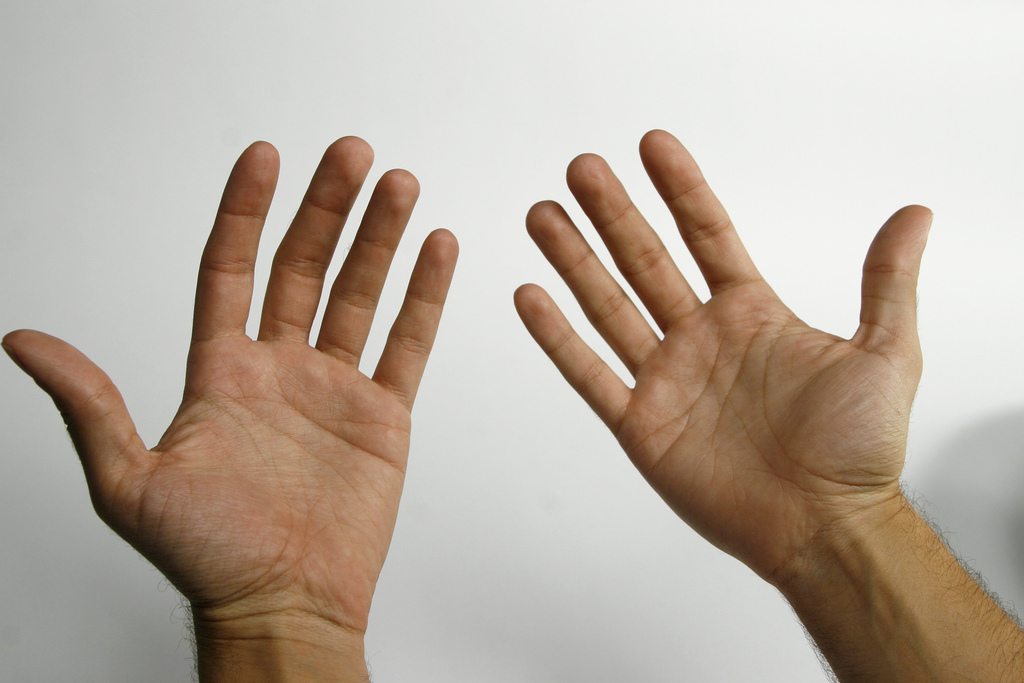Sometimes what you *don’t* say speaks even louder than your words. Here’s our advice on non-verbal communication for entrepreneurs.
A few weeks ago, I took CalTrain to Palo Alto for an interview with a startup based just outside of the Stanford campus.
Quaint, picturesque, street-level shops and no buildings higher than my natural line of sight. It was a breath of fresh air having just commuted from the heart of San Francisco.
As part of my research on how to ace this second interview, I had recently become obsessed with the art of non-verbal communication.
Although there’s still some debate as to the precise quantified importance of non-verbal communication, there’s something that all behavioral scientists can agree on … it’s pretty darn important.
Non-Verbal Communication Is the Language of Our Brain
If I asked you, “What does confidence look like?,” you would probably start to describe a series of traits or actions someone would take to portray conviction, right?
The truth is, the human brain decides if someone is confident before a person performs any courageous act or even speaks any words. Thus, it can be argued that, before you’ve made your pitch, a potential investor or client has already made up their mind as to whether they want to give you their money.
Ultimately, someone who wants to do business with you will want to see a certain level of faith and trustworthiness coming from your end. They want to know that you believe in what you’re selling.
After all, if you don’t believe in your product or service, why should they?
Let’s start by establishing what you shouldn’t do while trying to demonstrate confident body language.
Don’t Look Shady
We’ve all seen someone who seems a little uneasy — like they’re hiding something after you’ve just asked a question. It’s pretty easy to spot the kid who stole the cookie from the cookie jar.
As adults, sometimes we’re faced with situations where part of our brain doesn’t believe parts of our pitch or our work history. Not because it isn’t factual but because we’ve never had to make it sound so good.
This is where we psych ourselves out.
In their book, The Only Negotiating Guide You’ll Ever Need, Peter B. Stark and Jane Flaherty describe certain characteristics that are common to non-verbal communication scenarios when negotiating.
Among these non-verbal communication traits are two that are commonly misinterpreted: Uncertainty and Indecision, and Suspicion and Dishonesty.
In order to avoid sending the wrong signals, try to refrain from these types of non-verbal communication during meetings:
Touching Your Nose or Mouth
This habit is particularly common to people who wore braces as a kid and would often cover their mouth to either hide the braces or food particles that might be stuck in them.
It can be a tough habit to kick for some people. But it’s important to try to do so because, even if you’re not being dishonest, it can signal a lack of truthfulness to the people with whom you’re meeting.
Avoiding Eye Contact
This sounds obvious, but again, this may be a habit that you don’t even know you have.
Next time you’re having a discussion with someone in the office, notice how many times you break eye contact. It’s probably more than you think!
Biting Your Lip
According to the book, this can be a dead give away that you’re thinking too hard after being asked a certain question. This uncertainty or confusion conveys a lack of knowledge on the subject being discussed.
Crossing Your Arms
This action sends a message to your counterpart that you’re hiding something. The very literal gesture of covering your chest is almost universally observed as a sign of uneasiness.
So now you know what gestures and habits to refrain from so you don’t look shady or signal low self-esteem. Here’s what to do instead to convey confidence:
Make An Entrance
When you walk into the meeting, try your best not to look around the room. Find the eyes of the person you’re meeting with and walk over to them with purpose. Greet them with a firm handshake while maintaining good eye contact.
Side note: If your hands tend to get clammy while waiting in anticipation, try to make them as dry as possible before shaking hands. No one likes a moist handshake.
Before You Sit
According to Bill McGowan, highly sought after public speaking coach and author of Pitch Perfect: How to Say it Right The First Time, Every Time, you should adjust your chair to its maximum height before sitting down for a meeting.
This will allow you to maintain comfortable eye contact without having to talk up to anyone. Talking upward in your counterpart’s direction can cause detrimental psychological triggers in your negotiation.
The book also provides some excellent pointers on how you should be sitting in a meeting:
“Your stomach should come right up to the edge of the table, but if your shoulders are over the table, you’re slouching … You should feel a little pinch in the small of your back so you can sit both forward and straight up.”
While You’re Standing
If you need to stand up to give a presentation to your colleagues or begin a pitch in front of investors, it’s important to be mindful of the way you’re standing. An awkward stance while delivering a pitch can quickly send the wrong message about your ability as an entrepreneur.
Stand with your shoulders back to open the chest. This also prevents you from bringing your shoulders forward in a slouch, which comes across as awkward and unworthy of attention.
Whatever you do, don’t stand with your hands behind your back, at your sides, crossed at your chest, or in your pockets.
So, What Do I Do With My Hands?
One of the hardest things to master, even for the most experienced public speakers, is hand placement while presenting.
McGowan, the author I mentioned above, suggests creating a 90-degree angle between your forearms and upper arms, bringing your hands together at the belt buckle. Allow your fingertips to lightly touch.
Do gesture to make points but use this only to highlight critical areas in your pitch.
Try to refrain from doing common distractive gestures such as clasping your hands together in a death grip, rubbing your hands together repeatedly, or pacing while making a triangle with your fingertips.
Conclusion
When getting ready for an important meeting, entrepreneurs tend to focus on what they will say. But the message you convey silently through non-verbal communication can have an even bigger impact than your words.
Hopefully, after reading this list of dos and don’ts, you will be better prepared to convey confidence and trustworthiness in your next meeting.



